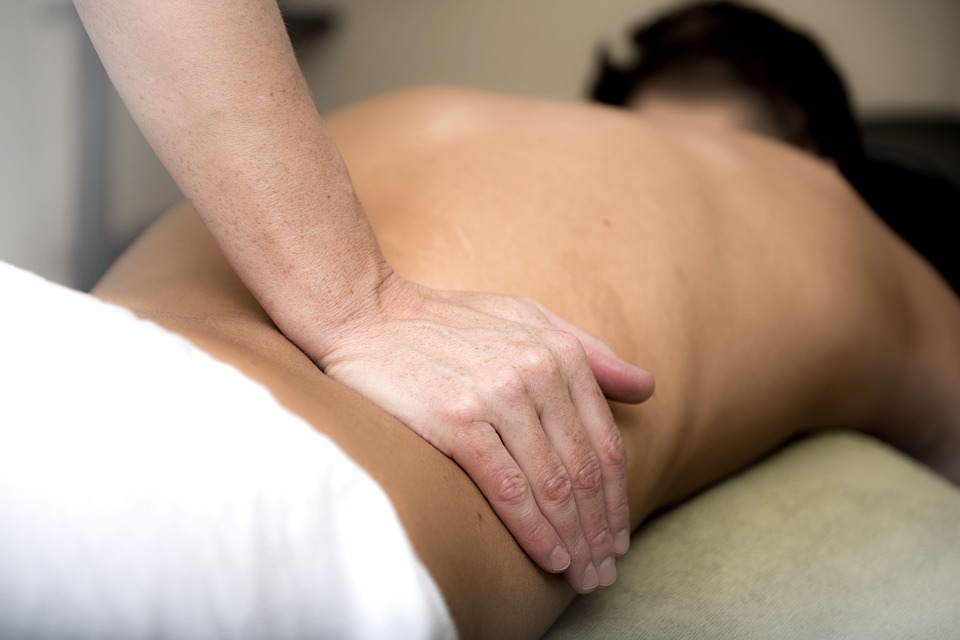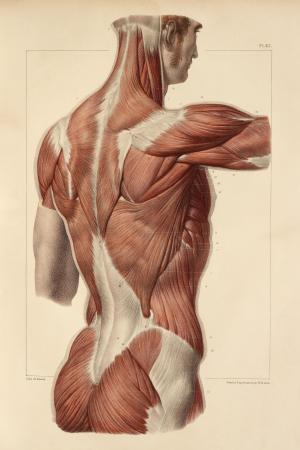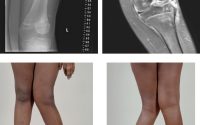Towards a Modern Framework for Manual Therapy: Integrating Evidence-Based Practices with Person-Centred Care

Musculoskeletal conditions are the leading cause of global disability and health burden, with manual therapy (MT) interventions frequently recommended in clinical guidelines. Traditional manual therapy (TMT) systems, such as physiotherapy, osteopathy, chiropractic, and soft tissue therapy, have historically relied on clinician-centered assessment, patho-anatomical reasoning, and technique specificity. These principles are not supported by current evidence. However, clinical trials show that MT is clinically and cost-effective for managing musculoskeletal conditions when included as part of a comprehensive care package.
A new discussion paper aims to propose a modern, evidence-guided framework for teaching and practicing MT that moves away from outdated TMT principles. This new framework is based on three core humanistic dimensions: safety, comfort, and efficiency, contextualized by positive communication, a collaborative approach, and person-centered care. It aims to facilitate best practices, reasoning, and communication. The development of this framework involved a literature review, input from experienced academics and clinicians, public presentations, and iterative discussions to achieve consensus.
Three core principles have become central to traditional manual therapy (TMT):
- Clinician-Centered Assessment: The evaluation process is heavily centered around the clinician’s expertise and judgment.
- Patho-Anatomical Reasoning: The approach relies on understanding and treating anatomical and pathological conditions.
- Technique Specificity: Specific manual techniques are emphasized for different conditions.
Despite their longstanding influence on the practice and teaching of manual therapy, these principles face growing scrutiny due to increasing empirical evidence challenging their efficacy.
Clinician-Centered Assessment
Traditional manual therapy (TMT) has historically focused on clinician-centered assessments, which assume that clinical information is highly accurate and diagnostically important. These assessments include routine imaging, searching for patho-anatomical lesions and asymmetries, and specialized palpation. The emphasis on such assessments likely stems from a desire for objective diagnostic tests that align with gold-standard imaging, like X-rays. Routine imaging often leads to unnecessary treatments and surgeries. For non-specific low back pain, imaging does not improve outcomes and can result in overdiagnosis and overtreatment. Clinical guidelines now recommend against routine imaging for non-traumatic musculoskeletal (MSK) pain, yet the practice continues.
Hands-on interventions are closely related to hands-on assessments, often claiming specialization that requires extensive training and precision. However, studies cast doubt on the validity and reliability of specialized palpation skills. Palpation of anatomical landmarks and specialized motion palpation do not reliably differentiate between those with or without low back pain. The delivery of interventions based on specialized palpatory findings is no better than non-specialized palpation, and the reliability of these skills is generally poor, regardless of clinician experience or training.
Person-centered palpation for pain and tenderness shows slightly higher reliability but is still limited. Effective manual therapy does not depend on specialized palpation. While expert therapists can achieve high interrater reliability with specialized palpation, the overall validity remains poor. Given the evidence, the role of clinician-centered hands-on assessment is no longer central to contemporary manual therapy.
Patho-Anatomical Reasoning in Traditional Manual Therapy
Patho-anatomical reasoning has historically justified the selection of manual therapy (MT) interventions based on the anatomical and pathological status of local peripheral tissues. This reasoning links clinician-centered assessments to the desire for precise delivery of MT interventions, relying on a patho-anatomic diagnosis and the presumed mechanisms of action of the intervention.
Prominent theories for the mechanisms of action of MT interventions include: Reduction of disc herniations, Re-positioning of bones or joints, Removal of intra-articular adhesions, Changes in biomechanical properties of soft tissues, Central pain modulation, and Biochemical changes
These theories have been used to justify matching specific diagnoses (such as the existence of a lesion) to particular treatments. However, most of these theories lack substantial evidence or have been directly contested.
The causal relationship between tissue-based factors like posture and ergonomic settings and pain has been disputed. While local tissue stiffness is observed in individuals with pain, it is usually associated with neuromuscular responses rather than patho-anatomical changes at the tissue level. Although some local tissue adaptations are identified in people with recurrent musculoskeletal pain, the evidence is inconsistent and of low quality, often limited to short-term follow-up measures.
In summary, patho-anatomical reasoning has been a cornerstone in justifying MT interventions, but many of its foundational theories and assumptions lack robust empirical support.
Technique specificity
Precise application of direction, joint movement grade, and tissue deformation at specific locations is believed to ensure successful outcomes. However, interventions often yield unintended effects, and movement restriction to specific spinal segments is difficult, leading to non-specific motion. Comparative studies do not consistently show superior outcomes for specific techniques over non-specific ones, with non-specific techniques sometimes proving more effective. Analgesic responses from passive movement and localized touch suggest an analgesic mechanism, but the exact mechanisms remain unclear and largely associative. Additionally, while MT can decrease inflammatory biomarkers, long-term benefits and direct links to clinical outcomes are not well established.
A Modern Framework for Manual Therapy
A modern framework for manual therapy (MT) shifts away from traditional principles like clinician-centered assessment, patho-anatomical reasoning, and technique specificity. Instead, it promotes person-centered care, leveraging best available evidence and contemporary healthcare principles. This approach emphasizes patient-centered assessments, such as thorough case histories and validated patient-reported outcomes, while incorporating real-time patient feedback.
The new framework focuses on fundamental and humanistic aspects of touch-based therapies, such as non-specific neuromodulation, communication, physical education, and contextual clinical effectiveness. It advocates for safety, comfort, and efficiency in practice, ensuring both patient and therapist well-being. Safety involves creating a risk-free environment and thorough consent processes. Comfort addresses the physical and emotional contentment of both parties during therapy. Efficiency aims for maximum therapeutic benefit with minimal waste, integrating holistic educational and activity-based approaches.
The framework encourages therapists to support patients’ self-efficacy, fostering therapeutic alliances and empowering patients through active approaches. It rejects reliance on traditional clinician-centered and patho-anatomical factors for MT indications, advocating for shared decision-making and evidence-based practice. This model is transdisciplinary, aiming to enhance self-management and autonomy in patients while maintaining a high standard of care.
Conceptual Themes in Modern Manual Therapy
Communication: Effective communication is central to the therapeutic process, aiming to help patients understand their symptoms and recovery path. This involves shared decision-making and contextualizing therapy with evidence-based explanations. Therapists should listen to patients’ accounts, facilitate sense-making, and address unhelpful beliefs about pain. Person-centered communication includes being responsive to verbal and non-verbal cues and ensuring a dialogical decision-making process, where patients discuss their understanding and treatment options, including the risks and benefits. Touch, as part of communication, should be consensual and can enhance the therapeutic relationship by fostering a sense of care and understanding.
Context: The therapeutic context significantly impacts patient satisfaction and outcomes. The clinical environment should promote positivity and empowerment, with careful consideration of passive information, organization of treatment spaces, and overall ambiance. Therapists’ attire and the clinical setting should be culturally sensitive. Additionally, MT should engage with the broader social environment, encouraging patients to share positive health messages and advocate for self-empowered healthcare.
Person-Centered Care: This approach integrates patients’ perspectives, respecting their values, preferences, cultural context, and emotional and social needs. Therapists should create space for patients to share their agendas and guide clinical interactions. Key actions include screening for serious pathology, effective communication, positive health education, and supporting active self-management. The revised MT model aims for a trans-disciplinary understanding, rooted in evidence-based practice, to enhance patient outcomes. This framework encourages self-reflection and stakeholder discussions to drive positive change in manual therapy practices.
Conclusions
Manual therapy interventions should combine passive techniques with active, person-empowering strategies such as exercise, education, and lifestyle modifications. These interventions should be delivered within a healing environment that emphasizes a strong therapeutic alliance between the person and the practitioner. The teaching of manual therapy should adhere to this model, promoting both the practical and relational aspects of care.

